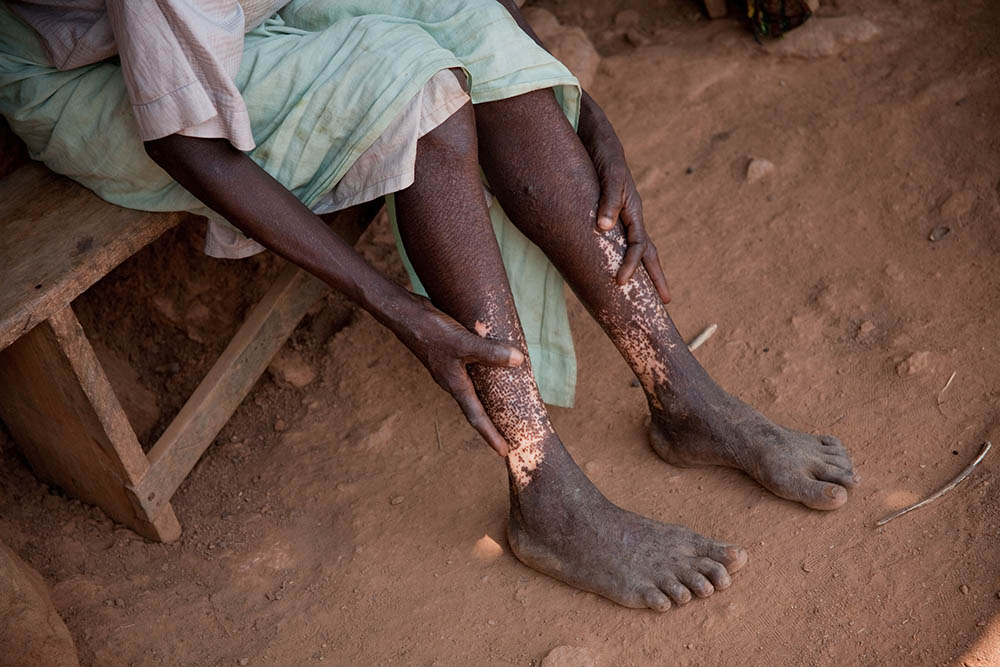Onchocerciasis (äŋ-kō-sər-ˈkī-ə-səs), also known as river blindness, is a parasitic disease endemic in Africa, Latin America, and Yemen. The disease has been eliminated in four countries in the Americas: Brazil, Colombia, Ecuador, and Mexico. The last remaining endemic areas are found along the border between Brazil and Venezuela deep in the Amazon jungle in the nomadic Yanomami Indian communities. Several countries in Africa are also close to elimination: Chad, Mali, Niger, Senegal, and Uganda.
The disease is transmitted through the bites of infected blackflies of the genus Simulium. These flies carry the immature larvae of the filarial worm that causes river blindness, Onchocerca volvulus, which are transmitted from human to human through multiple, frequent bites. In the human body, the larvae, also known as microfilariae, form nodules in the subcutaneous tissue, where they mature into adult worms and reproduce. After mating, the female adult worm can release up to 1,000 microfilariae a day.
Clinical Manifestations
- > The adult worms form nodules under the skin where they live and reproduce.
- > As juvenile worms migrate to the eye, vision becomes impaired and over time, blindness develops.
- > As juvenile worms move through the skin, they cause severe rashes, intense itching, lesions, and skin depigmentation.

Diagnosis
- > The most common method of diagnosis is the skin snip, or small biopsy of the skin examined under a microscope to identify larvae. Alternatively, polymerase chain reaction (PCR) tests of the skin can be used to analyze parasitic DNA.
- > Subcutaneous nodules can be surgically removed and examined for adult worms.
- > Eye examinations through slit-lamps can reveal whether larvae or lesions are visible in the anterior part of the eye.
- > Antibody tests have been developed to detect infection in the blood.
Treatment
Prior to the donation of Mectizan®, the only way to control river blindness was by larvaciding the rivers that house the breeding grounds for the blackfly species that transmits the disease. There was no safe and effective treatment to control the unbearable symptoms of the disease. When taken once annually, Mectizan relieves the agonizing itching and halts progression toward blindness. The medicine is well suited for mass drug administration (MDA) in remote areas by trained community health workers.
Status of MDA for river blindness in 2021
*Provisional data
**Additional mapping may be required
†Oncho believed to be not endemic or no longer endemic
Source: World Health Organization
Status of MDA for river blindness in 2021
Transmission Status Unknown or MDA Not Started | MDA Started but Not At Scale | MDA Scaled to All Endemic Communities | In Post-MDA Surveillance | River Blindness Elimination Verified |
|---|---|---|---|---|
|
|
|
|
|
†River blindness believed to be not endemic or no longer endemic
Source: World Health Organization

